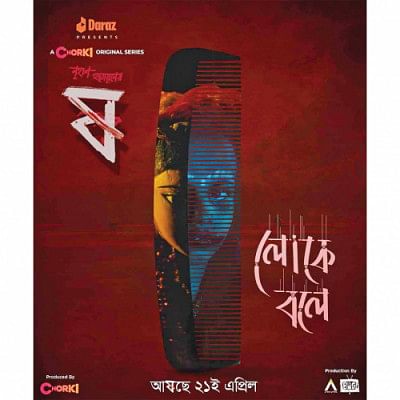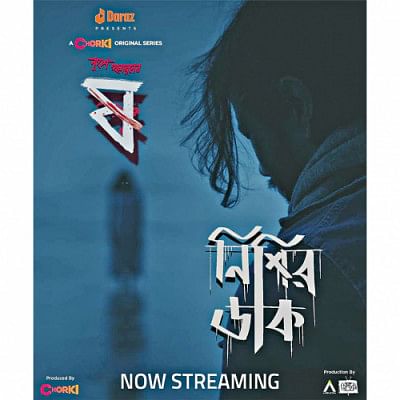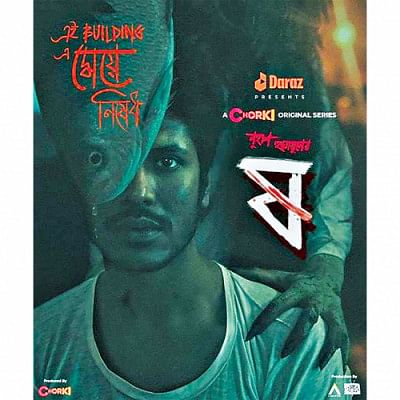An astounding interpretation of Bangla folklore

The colour-grading in the series deserves a special mention, especially for the final episode, as it carefully looks to archive the beauty of darkness in layers, paired with fright and anonymity that follows through the bleak blemishes in "Nishir Daak".
A shakchunni (hag) with twisted feet, a rather jolly djinn looking for sweets in the ebony of night, long strands of loose hair calling upon an entity, and the night-voice calling children from their sleep– this is what Nuhash Humayun's horror web series "Pett Kata Shaw'' has in store for its spectators. Re-narrating famous Bangladeshi folklores, Nuhash's "Pett Kata Shaw '' comprises of four episodes, each running between 25-35 minutes. Starting with its first episode, "Ei Building e Meye Nished", the Chorki original was slow to take off. Starring Shohel Mondol and Shirin Akter Shela, this episode revolves around the long-known ghost story of how petnis (spectres) feel invited when one decides to bring fish home at night.
Shohel's soliloquy, which was supposed to incorporate an essence of light humour in the production, seems off. However, Shela performed brilliantly, making the character believable to her viewers. Nevertheless, the cliff-hanger ending compels the audience to keep waiting for the second episode "Mishti Kichu".

Picking up its pace with the Chanchal Chowdhury and Afzal Hussain starrer "Mishti Kichu", the anthology series gains back its ground. With Chanchal's brilliance and Afzal Hussain's charm, the story not just echoes the fate expected to suffer by individuals who sneak in favours from djinns, but also puts forward the message – forgetfulness, though often assumed to be a curse, is a bliss.
Matching up to the veterans, Nawshaba also pulls off her scenes with ease, projecting simplicity and naturally toned facial expressions. Paired with a remarkable setting (a very general local sweetshop), an undistorted scene flow, and fit-to-local characterisation, "Mishti Kichu" is a sweet treat for fans of the horror genre.
The third episode, "Loke Bole", pins the strongest hook in the minds of its viewers. Its amazingly crafted narrative style, incorporating the 'lost' culture of puppeteering, is just as delightful as the grandma's golper ashor would be to kids. Diving back to old memories, this episode has the potential to travel back in time, teleporting its audience to their childhood when stories had the power to instigate emotions, especially fear, anxiety and thrill.

Despite being his first, Morshed Mishu's performance on screen is a pleasant surprise, while the production's reverse-gender role play looks to deconstruct the proverb mostly used for women, "Raat E Chul Khule Bahire Jaite Nai" (Don't step out with loose hair at night). Syeda Taslima Hassan Nodi and Pronoy Dab Ucchas compliments Mishu's screen presence radiantly, leaving very little space for criticisms.
After "Loke Bole", the final episode "Nishir Daak", manages to keep up with the expectations. Hallowing the myth behind sleepwalking, Pritom Hasan steals the show, projecting a harmonious depiction of contradicting emotions, such as grief, depression, and curiosity, intensely.
The colour-grading in the series deserves a special mention, especially for the final episode, as it carefully looks to archive the beauty of darkness in layers, paired with fright and anonymity that follows through the bleak blemishes in "Nishir Daak".

The season finale finally ties down all the stories, diluting the line between fiction and reality. As it draws deep into an angle that reinforces the idea of these tales being actually true, "Pett Kata Shaw" leaves the viewer in a dilemma, unable to overcome their own inner voices that scream otherwise.
With the final landing, the whole series is now available for streaming on Chorki, yet another home run on the platform.

 For all latest news, follow The Daily Star's Google News channel.
For all latest news, follow The Daily Star's Google News channel. 



Comments